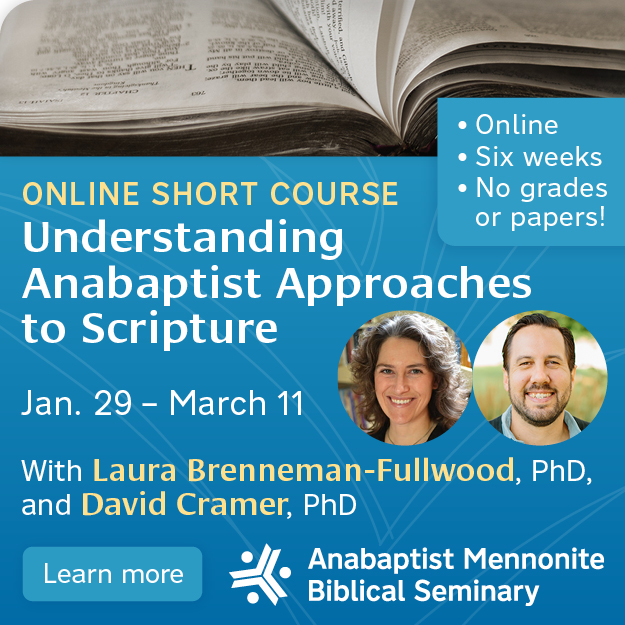Reader addresses what he believes are ‘inaccuracies’
Re: “From milk and honey to a land of rubble,” Aug. 18, page 4. There are a several inaccuracies in this article that need to be addressed:
1. The author writes: “As I examine Scripture, I find three different sets of land boundaries. . . . Given this variety in boundary descriptions, it is impossible to draw a precise map of the specific land that God would have promised to Abraham and his descendants.”
This is irrelevant to the question of whether or not God gave the land to Israel. The boundaries differ because Israel did not obey God and so were not able to claim all that God had promised. The point being that God originally intended for them to have far more than they actually claimed. Certainly Jerusalem, the land of the Jebusites, is included in the boundaries of that promised by God according to Genesis 15:18-21. The actions of modern-day Israel do not negate the promises of God any more than they did in the past.
2. The author writes: “In Genesis 15:18, God tells Abraham that he is giving the land to Abraham’s descendants, which would have included both the children of Ishmael and the children of Isaac. God blessed them both and promised that they would become great nations (Genesis 17:20). Might that mean that the land actually belongs to both the Arabs and the Jews?”
In context, the very next verse (Genesis 17:21) reads, “But my covenant I will establish with Isaac, whom Sarah shall bear to you at this appointed time next year.” So scripturally, the promise of the land is for the descendants of Isaac only.
3. The author writes: “God’s promise to Abraham and his descendants was part of a covenant, and therefore conditional. Time and again, Moses and the prophets warned that if the Israelites were to remain in the land, they needed to live up to their part of the agreement to obey and honour God.”
The author refers to the covenant of Moses agreed to by the people, which is laid out in Deuteronomy 27 to 30. This indeed was a conditional covenant and ended with the scattering of Israel.
However, the promise of the land to Abraham was an unconditional covenant. In Genesis 15:17-21, God alone passed through the divided animals in the covenant ceremony, making it a one-sided cove-
nant that did not require a commitment on the part of Abraham or his descendants. Neither do we read of Abraham making any detailed covenant promises at that time.
Kelvin Rempel (online comment)
Read more of Kelvin Rempel’s critique of Palmer Becker’s feature article.
Let’s take the plank out of our own eyes when it comes to rape culture
Re: “End rape culture: A Mennonite perspective,” Sept. 6, page 36.
I am very disappointed with this article. How can you write an article on rape culture from a Mennonite perspective without mentioning the large-scale sexualized violence that occurs within Mennonite communities or even how the Mennonite faith perpetuates rape culture? These sorts of issues seem much more relevant to the conversation than a few people’s experiences of being cat-called by, I’m assuming, non-Mennonites.
Any discussion of rape culture and Mennonites should include stories of how Mennonite communities and institutions deal with issues of sexualized violence. How can one not mention the more than 130 victims of the ghost rapes in Manitoba Colony, Bolivia, who were never even given access to professional counselling or treatment?
Furthermore, how can one avoid examining ways in which Mennonite theology impacts victims and perpetuates cycles of abuse? What exactly does it look like to turn the other the other cheek when you are being repeatedly sexually abused?
In addition, emphases on forgiveness can be used to shame victims and prevent them from reporting an abuser. This victim shaming is further perpetuated by teachings of nonviolence and the influence of John Howard Yoder’s theology of radical submission.
This isn’t even including theology surrounding male/female sexual relationships and lust. If we don’t ever talk about these issues within the context of abuse and rape culture, then a distorted and violent theology can emerge that punishes victims and coddles offenders.
Even if one wants to take a more hopeful note, I would have hoped to see some consideration for ways in which Mennonite communities can draw from their faith in order to challenge rape culture.
This article primarily takes the perspective that rape culture is something that Mennonite women encounter in the broader, secular world, and fails to highlight the serious issues of rape culture within the Mennonite community.
Jenna Dyck (online comment)
Reader wonders if sanctioned pastor actually repented
Re: “Whatever happened to forgiveness” letter by Waldimar Neufeld, Sept. 1, page 11, which was written in response to “Pastor’s credentials withdrawn,” July 7, page 23.
With God’s grace, repentance can pave the way for reconciliation and restoration. My question is: Was there repentance?
Elaine Fehr (online comment)
Sexuality, marriage are governed by God’s Word
As people of “the way,” we trust Jesus, the author and finisher of our faith. His words are truth: “I am the way the truth and the life. No one comes to the Father except through me” (John 14:6).
Jesus’ words are permanent: “Heaven and earth will pass away, but my words will by no means pass away” (Matthew 24:35).
Jesus said we must turn from our sin: “I tell you, no, but unless you repent you will all likewise perish” (Luke 13:3).
Our love for Jesus must show itself in obedience to him: “If you love me, keep my commandments” (John 14:15).
Jesus lists some of the sins that we are to avoid: “What comes out of a man is what makes him ‘unclean’. For from within, out of men’s hearts, come evil thoughts, sexual immorality, theft, murder, adultery, greed, malice, deceit, lewdness, envy, slander, arrogance and folly. All these evils come from inside and make a man ‘unclean’ ” (Mark 7:20-23).
Sexual immorality is sexual activity outside the bond of holy matrimony, the union of a man and a woman: “But since there is so much immorality, each man should have his own wife, and each woman her own husband” (I Corinthians 7:2), “Marriage should be honoured by all, and the marriage bed kept pure, for God will judge the adulterer and all the sexually immoral” (Hebrews 13:4), and, “[Jesus] answered, ‘Haven’t you read in your Bible that the Creator originally made man and woman for each other, male and female? And because of this, a man leaves father and mother and is firmly bonded to his wife, becoming one flesh—no longer two bodies but one. Because God created this organic union of the two sexes, no one should desecrate his art by cutting them apart’” (Matthew 19:4-6).
Ken Doell, Altona, Man.
Israeli dominance came from ‘fragile beginnings’
Re: “From milk and honey to a land of rubble,” Aug. 18, page 4.
Palmer Becker writes, “[I]f the Jews had entered the land peacefully in 1948 . . . together [Palestinians and Jews] could have made the country flow with milk and honey.” A nice thought, but was a peaceful entry ever even a remote possibility? How much control over events did the Jews have?
Britain was in charge until 1947, restricting immigration before handing the situation over to the UN. The UN offered to divide Palestine between the Jews and the Palestinians. The Jews agreed, but Palestinians backed by nearby Arab states said no.
The Jews then unilaterally set up the State of Israel effective May 1948 in the face of fierce opposition regionally, but with UN approval. Both the U.S. and Russia quickly recognized Israel.
The Arab states attacked even before the declaration of statehood. Syria, Iraq, Lebanon, Transjordan plus Egypt, with an air force, greatly outnumbered and outgunned Israeli forces, but with divided leadership.
According to Paul Johnson, author of A History of the Jews, “virtually everyone expected the Jews to lose.”
Who came to the rescue? Not the U.S., but Joseph Stalin. “Communist Czechs on Soviet instructions . . . made Israel’s survival possible, by turning over an entire airfield to shuttle arms to Tel Aviv,” Johnson writes.
Anti-Semitic at home, Stalin took this foreign policy action to further weaken and embarrass Britain. A year later, Stalin entirely abandoned his support of Israel in favour of the Arab states and Egypt.
“Israel slipped into existence through a fortuitous window in history which briefly opened for a few months in 1947-48. That too was luck; or providence,” according to Johnson.
Atrocities were committed on both sides. The massacre by Jewish forces of the Palestinian village of Deir Yassin was inexcusable and contributed to a stampede of Palestinian refugees, which soon numbered over a half-million. Almost the same number of Jewish refugees fled the Arab states at this time and were absorbed into Israeli society.
Israel appears so dominant today, but it is important to recall its fragile beginnings.
Al Hiebert, Kelowna, B.C.
What is the basis for ‘a new leadership model’?
Re: “A new leadership model,” Sept. 1, page 2.
On the issue of sexuality, the Bible provides us everything we need to know about what is right in the eyes of God. Is editor Dick Benner suggesting that what the “experts” bring into the church from scientific findings, sociological studies and new data on sexuality will help the church to define what is right and moral before God? Is this new model of leadership that he is proposing supported in Scripture? I don’t find it in God’s Word.
Elaine Fehr (online comment)
Forgiveness of abusers is first and foremost for the forgivers
Re: “Whatever happened to forgiveness?” letter, Sept. 1, page 11.
While Waldimar Neufeld’s concern for the restoration of offenders is commendable, it is a picture all too common among Christians.
Leaders who cross sexual boundaries leave in their wake children and adults who have been scarred physically, emotionally and spiritually. Too often, professing Christians wrongly define forgiveness and use it as a club to silence and shame abuse survivors. Forgiveness is first for the forgivers, to release them from something that will eat them alive and destroy their ability to love fully and openly.
People who really understand the gravity of their sin, and truly repent, ought to understand why they are not completely trusted. Boz Tchividjian, grandson of Billy Graham, said on his Godly Response to Abuse in the Christian Environment (GRACE) Facebook page on July 2: “Boundaries, limitations and refraining from complete trust are demonstrations of Christian love towards offenders who profess repentance.”
When restrictions do not happen, perpetrators are emboldened to offend again and many victims leave the church. Please continue to pray for the known and possibly unknown victims of convicted offenders.
Helma Schmidt, Leamington, Ont.
Helma Schmidt is a member of the Ontario Sexual Misconduct and Abuse Resource/Response Team (SMARRT) and attends Leamington United Mennonite Church.
Is a ‘splintered’ church the price we have to pay?
Re: “A new leadership model,” Sept. 1, page 2.
The general sentiment of Dick Benner’s editorial in which he calls for a “priesthood of all believers” approach to church leadership fully resonates with me. Still, I wonder if some of his arguments that back up this sentiment are sound. And are they really all that new, as he suggests?
While I join Benner in questioning the sentiment of one reader who calls for a more top-down leadership approach in our churches, does Benner’s argument hold water when he states that culturally focussed splinters plaguing Mennonite churches are caused by “strong egotistical leaders” that favour such an approach? I wonder if the true answer to his question of why North American Mennonites “represent 18 different major groups” is precisely because of our “priesthood of all believers” approach, rather than the answer he gives.
I have always thought this propensity to division and splintering was the result of what I would call the “Mennonite conundrum”: If we want a broad-based, inclusive—dare I say “democratic”—approach to church leadership, which I do, then maybe the odd splinter is the price we have to pay. This, of course, is not to say that Mennonites have not had egotistical leaders—some appointed by structure, some self-appointed—who swayed from our Christian interpretation and, in turn, swayed congregations. But maybe these are exceptions to the general rule.
If one looks scientifically and objectively at the data, as Benner calls for, I believe one would conclude that churches with more top-down leadership styles—Anglican, Roman Catholic, Lutheran, for example—have had many fewer splinters, even though debate within those churches has often been heated and confrontational, just as they have among Mennonites.
As to the “Mennonite conundrum,” I will take a few splinters here and there anytime over top-down leadership and “unity at all cost.”
Chester Reimer, Ottawa
Embracing the moment is ‘normal’
Re: “Good work,” page 4, and “Differently gifted,” page 8, Sept. 1.
I think communities like L’Arche are indeed “doing a good work,” but a “good work” that is quite basic to Christian values. The “good work” of being a friend and building a relationship is a rudimentary expression of God’s love.
It is unfortunate if people or groups are placed into a category of “more difficult to love.” As Will Braun suggests, the church should be leaders in dismantling unhealthy categories and stretching people towards a new definition of “normal.” It is precisely in the context of the church that the broadest definition of “normal” is revealed. All people need love and restoration. All are embraced by a loving and passionate Creator. All people loved by God and embracing that love become the community of faith.
I welcome an understanding of “normal” that embraces the moment, is uninhibited in expressing emotions, and generally meets people with acceptance and love. For those in my life with “disabilities,” such expressions are normal.
Willard Metzger (online comment)
–Posted Sept. 24, 2014






Leave a Reply
You must be logged in to post a comment.